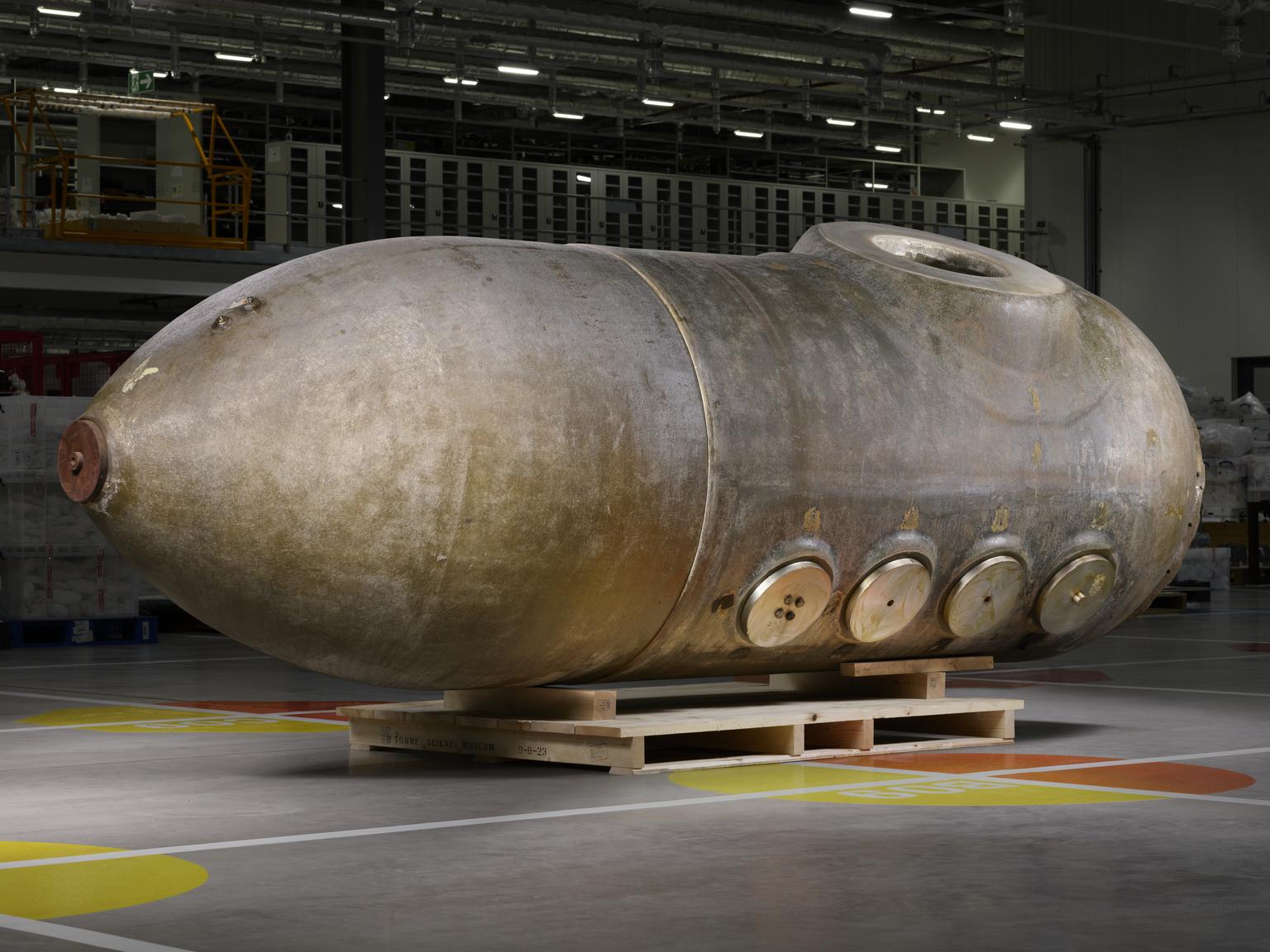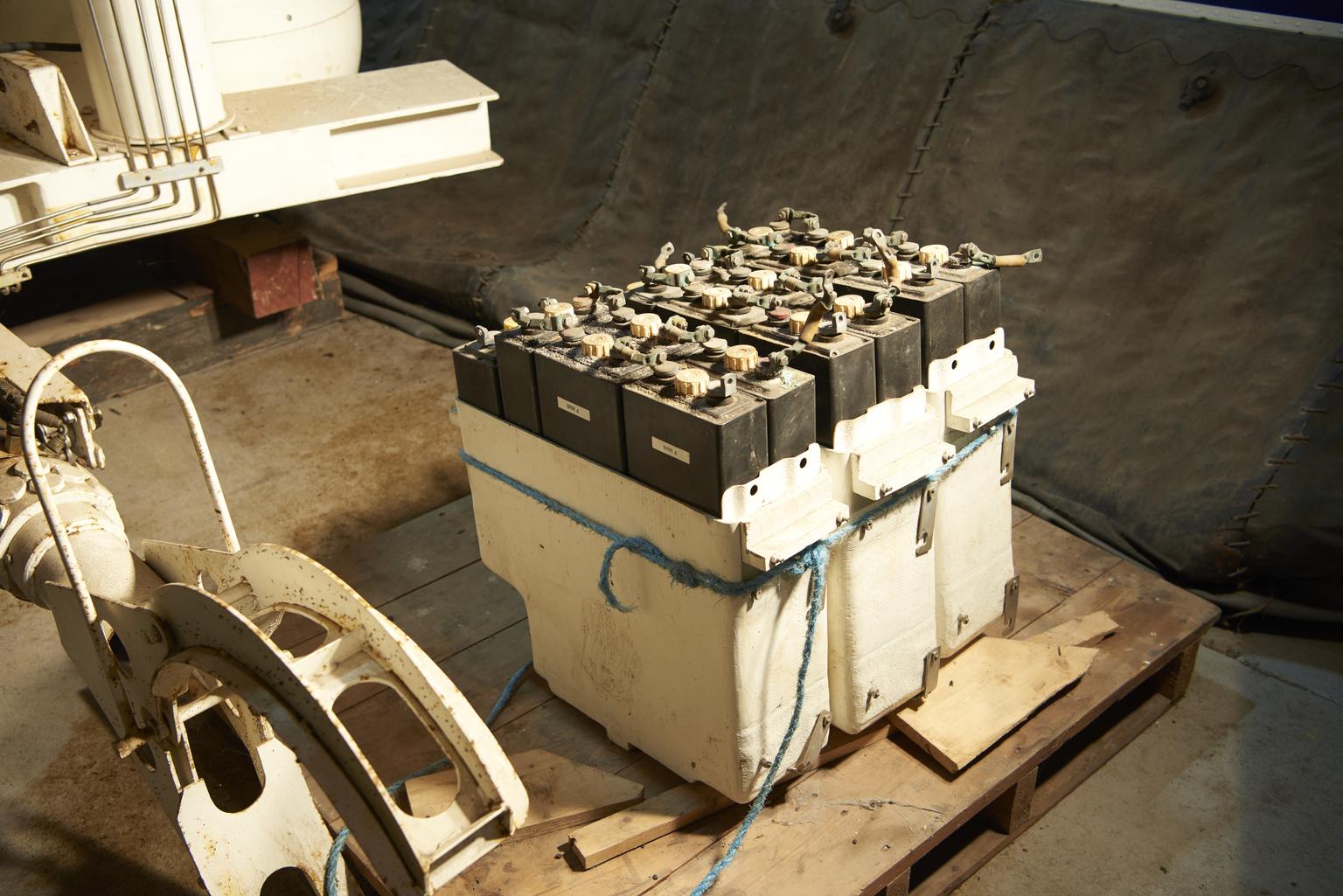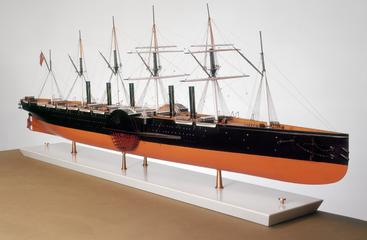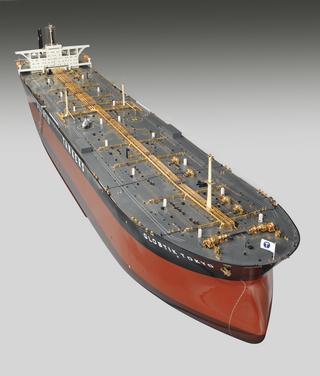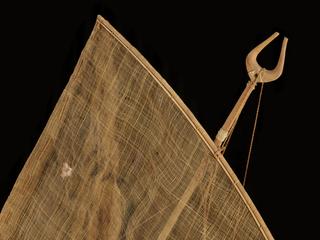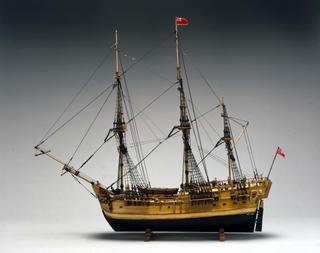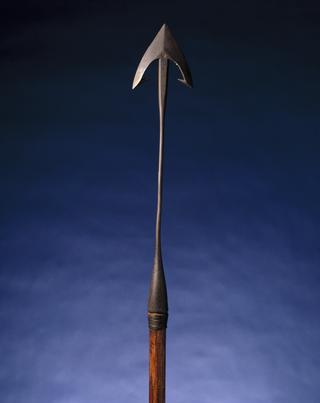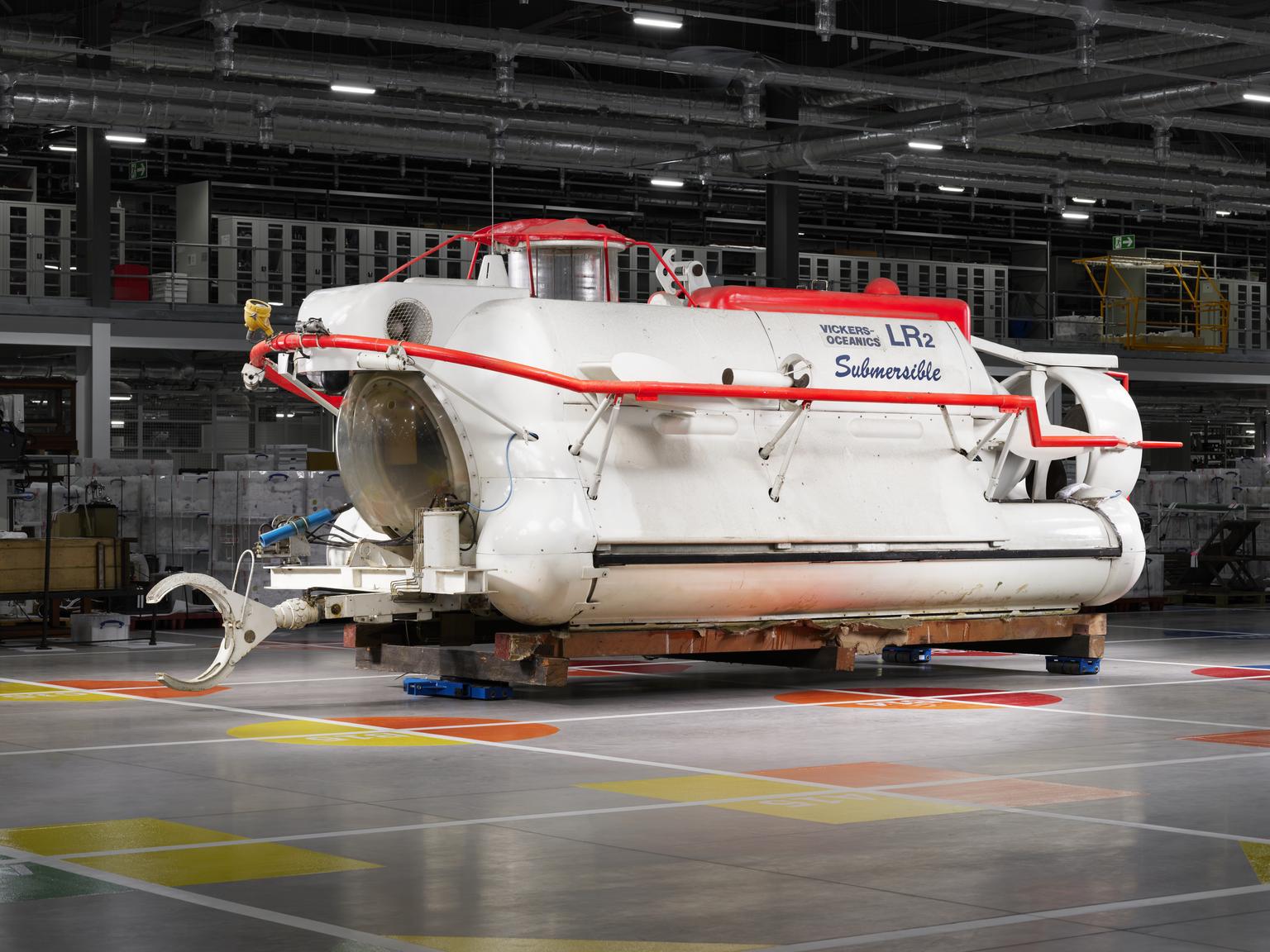
Vickers Oceanics LR2 Submersible.
This LR2 was built in 1975 by Vickers-Slingsby, a subsidiary of Vickers Oceanics Limited acquired in 1969.
The craft weighs approximately 12 tonnes. Mounted to the side of the craft are two large cylindrical battery pods which are detachable so they can be exchanged for fully charged ones from its support ship. The LR2 is manoeuvred by a large main propulsion motor in a fixed position at the back, alongside two smaller directional propulsion motors on either side of the hull.
The front of the craft has a single large acrylic window which the crew would use to see where they are going. The conning tower of the LR2 also has an acrylic window to see over the top of the craft. The vehicle’s manipulator arm and claw are also positioned below the front acrylic window.
The body of the LR2 is painted white and red, and with the words ‘Vickers Oceanics LR2’ painted on the sides of the submersible.
More
During the 1960s and 1970s, the UK carried out a significant expansion of its offshore oil industry, primarily focusing on the North Sea, known for its extreme weather and strong tidal currents. Vickers (later British) Oceanics Limited developed a fleet of submersibles which could operate in these conditions and lay the critical cables and pipes needed to extract the oil beneath the sea.
The LR2 was built in 1975 through a subsidiary of Vickers Oceanics, Vickers-Slingsby, as part of the LR series of submersibles which were named after pioneering master shipbuilder Sir Leonard Redshaw. The LR series of craft were, like many of the deep-sea submersibles of the time, designed to fulfil various roles ranging from repairs, salvage, surveying, and rescue operations. The LR2 weighed approximately 12 tonnes, was designed to be crewed by three people, and could reach an official depth of up to 1500 feet.
A notable feature of the LR2 was that it was one of the first submersibles to have its thick hull built entirely out of glass-fibre-reinforced plastic (GRP), a composite not unlike Bakelite or other types of ‘fibreglass’ materials in use in airplanes and light boats and submersibles. Whilst GRP materials have existed since before the Second World War, the LR2 was one of the first designs of seafaring vehicle to have a hull made entirely out of GRP, which made the LR2 lighter, faster and more durable than submersibles built using steel and other composites. Vickers-Slingsby was noted for being an early pioneer of GRP in the 1960s and 1970s, who highlighted the strength, versatility, cheap cost, and ease of shaping of GRP compared to other materials such as steel. Using GRP for bodywork, shells, and hulls quickly proved to be a significant breakthrough in the building of ships, airplanes and cars in the post-war period.
Whilst designed for a wide variety of operations, the LR2 was mostly used for seabed site surveying, using its range of advanced equipment such as cameras, magnetometers and sub-surface scanners to map the ocean floor and help find the best locations to access the oil reserves below the North Sea. The LR2, among other craft, was used around Shell-Brent oilfield north-east of the Shetland Islands providing maintenance, repairs, and mineral surveying.
In 1978 Vickers Oceanics Limited ended its offshore business and retired most of its fleet of manned deep-sea submersibles, including the LR2 which only had a few years of operation.
- Measurements:
-
overall: 2900 mm x 2980 mm x 8100 mm, 12 t
- Materials:
- plastic (unidentified) , rubber (unidentified) , glass , steel (metal) and fibreglass
- Object Number:
- 1990-438/1
- type:
- submersibles
- Image ©
- The Board of Trustees of the Science Museum
